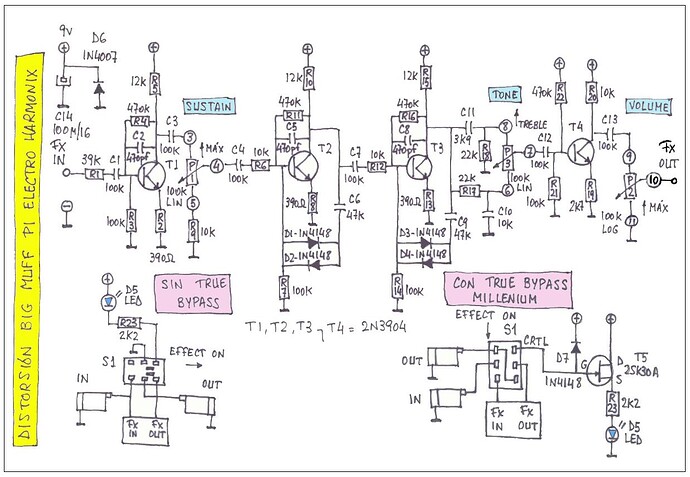Hi all, I’m Restart and I’m an Audulus user since more than 3 years ago, maybe someone remembers me because i had some crazy ideas (and crazy hair right now) for making modules, and I want to restart doing them but before all I want something simplier (I hope).
I’m guitar and bass player, so I would like to use Audulus as my effect station. My idea is to use this midi interface :  and control with it the effects in audulus while I’m playing live with the instrument. I could emulate some simple effects but I want more (allways moreeeee) and I had a thought: If I know how to emulate what the basic electronic components (resistor, capacitor, diode…) do in an audio signal, I could make any emulation of any effect following the diagrams that are in the internet, such as this
and control with it the effects in audulus while I’m playing live with the instrument. I could emulate some simple effects but I want more (allways moreeeee) and I had a thought: If I know how to emulate what the basic electronic components (resistor, capacitor, diode…) do in an audio signal, I could make any emulation of any effect following the diagrams that are in the internet, such as this
So… can anyone help me explaining (with examples in audulus if possible) what the electronic components of guitar effect pedals does? I think that if we get this it could be a nice claim for audulus, because as me there are many people that don’t like the limitations and sounds of msot of the apps out there.
Many (men e.?) thanks and sorry for my poor english.
